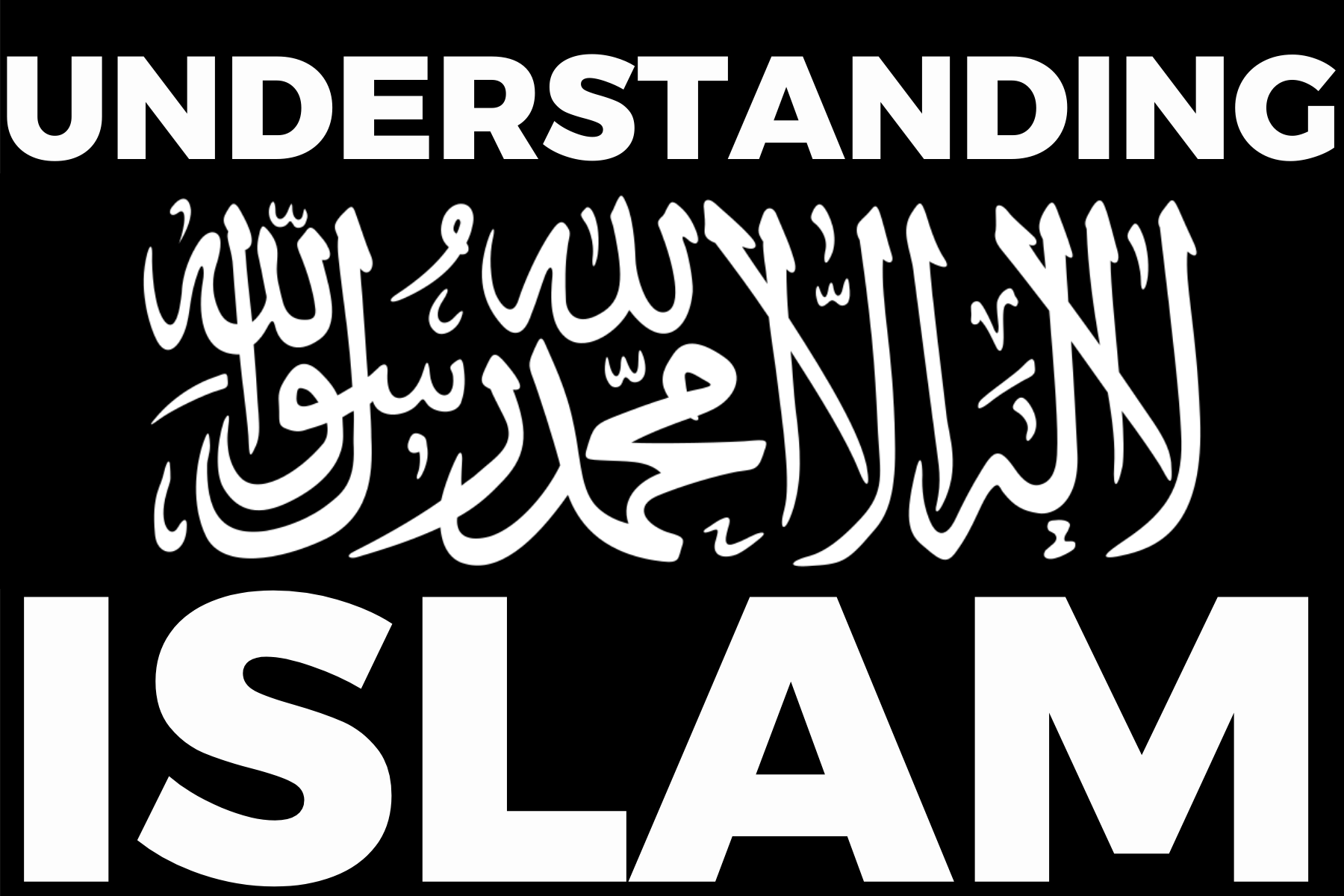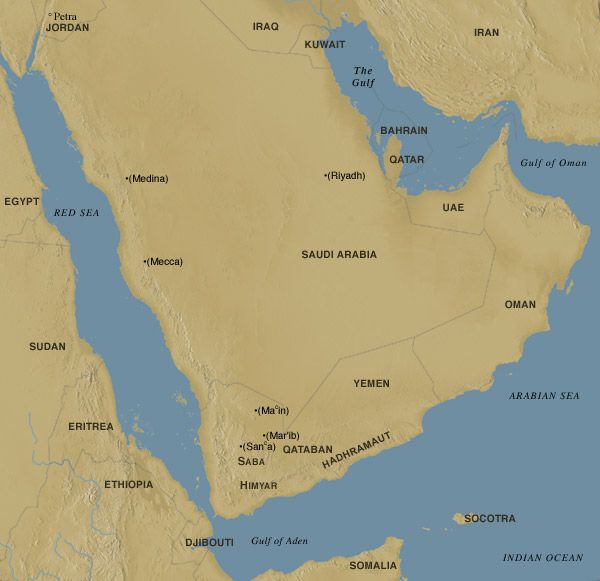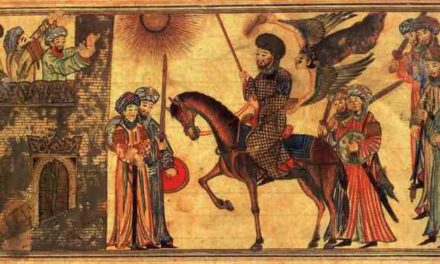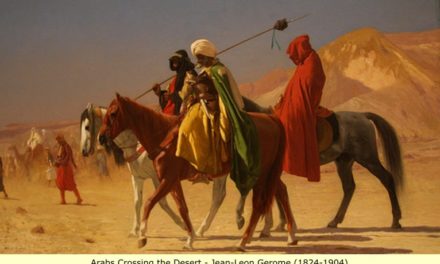The history of the Middle East, from the time of Ibrahīm, (c.1,800 B.C.) to the present day, has been a troubled one. This is in part due to its position as a land bridge and trading crossroads between the continents of Europe, Asia and Africa.
It is important to note:
- The ‘pure Arabs’ – the people of Qahtan – who originally lived in Yemen. These comprised two significant tribes being the Himyar (who stayed in Yemen) and the Kahlan (who migrated north). The Kahlan comprised of four groups and it was the Al-Azd group who were the forefathers of the Aws and the Khazraj.
- The Arabs that trace their ancestry back to Ibrahīm from Ar (Ur) on the west bank of the Euphrates in Iraq. We know that Ibrahīm spent time in Egypt and it was during this time that Pharaoh gave his daughter Hājar to Sarah (the wife of Ibrahīm) in recompense for his actions towards her. Sarah gave Hājar to Ibrahīm as a wife and Hājar had a child, ʾIsmāʿīl. Sarah, being childless, was jealous of Hājar and made Ibrahīm send Hājar and her baby to an uncultivated valley in Hijaz and it was here, some years later, that Ibrahīm and ʾIsmāʿīl built Al-Ka’bah and called people to perform pilgrimage to it.
Islam’s geneologies trace Muhammad’s (SAW) ancestry from his family of Hashim (in the sixth century C.E., to the tribe of ‘Abd Manaf bin Qusai, to the Quraish and back to Adnan (122 B.C.) and then, in various versions, back to ʾIsmāʿīl and Ibrahīm (born c.1,813 B.C.).
This span of c.2,400 years – from the time of Ibrahīm to the dawn of Islam – was a time of great turmoil, subjugation and degeneration for the Arabs including (but not limited to):
- The decline of the oldest known nation of ‘pure Arabs’ (Ma’iniyah/Sheba/Himyar – 1,300 B.C. to 300 C.E) due to Nabatean dominance of Hijaz, Roman naval dominance of trade, and inter-tribal warfare.
- Bukhtanassar’s (Nebuchadnezzar) Babylonian invasion (587 B.C.) leading to the flight of the Adnanidian Arabs to Yemen
- Roman control of parts of Hijaz (106 C.E.)
- Assisted by the Romans, two conquests of Yemen by the Abyssinians (Ethiopians) (340 C.E. and 525 C.E.) and Yemen’s later colonization by the Persians, which lasted until the embrace of Islam.
- The subjugation of the Arabs of Heerah and Anbar (Iraq) by the Persian Sassanian state (226 C.E.) until the arrival of Islam (631 C.E.)
- The defeat and subjugation of the Arabs of Syria under the Ghassanides (end of 2nd century C.E.) until the battle of Yarmuk (13 A.H.) and their embrace of Islam.
- The conflict and battles between Arab tribes for control of Mecca and Al-Ka’bah; seeing control pass from the family of ʾIsmāʿīl, to Jurhum, to ‘Adnanides, to Khuza’ah (mid-2nd century C.E.), to Qusai bin Kilab of the Quraish (440 C.E.), to Qusai’s son ‘Abd Manaf and, on his death, the fierce infighting between his sons and their cousins.
- The spread of Judaism and its political influence across the Arabian Peninsular as far as Yemen.
- The spread of Christianity across the Arabian Peninsular including the tribes of Ghassan, Taghlib, Tai and some Himyarite kings.
It was as part of this history and in this context that Muhammad (SAW) was born into the family of Hashim, part of the Quraish tribe.





